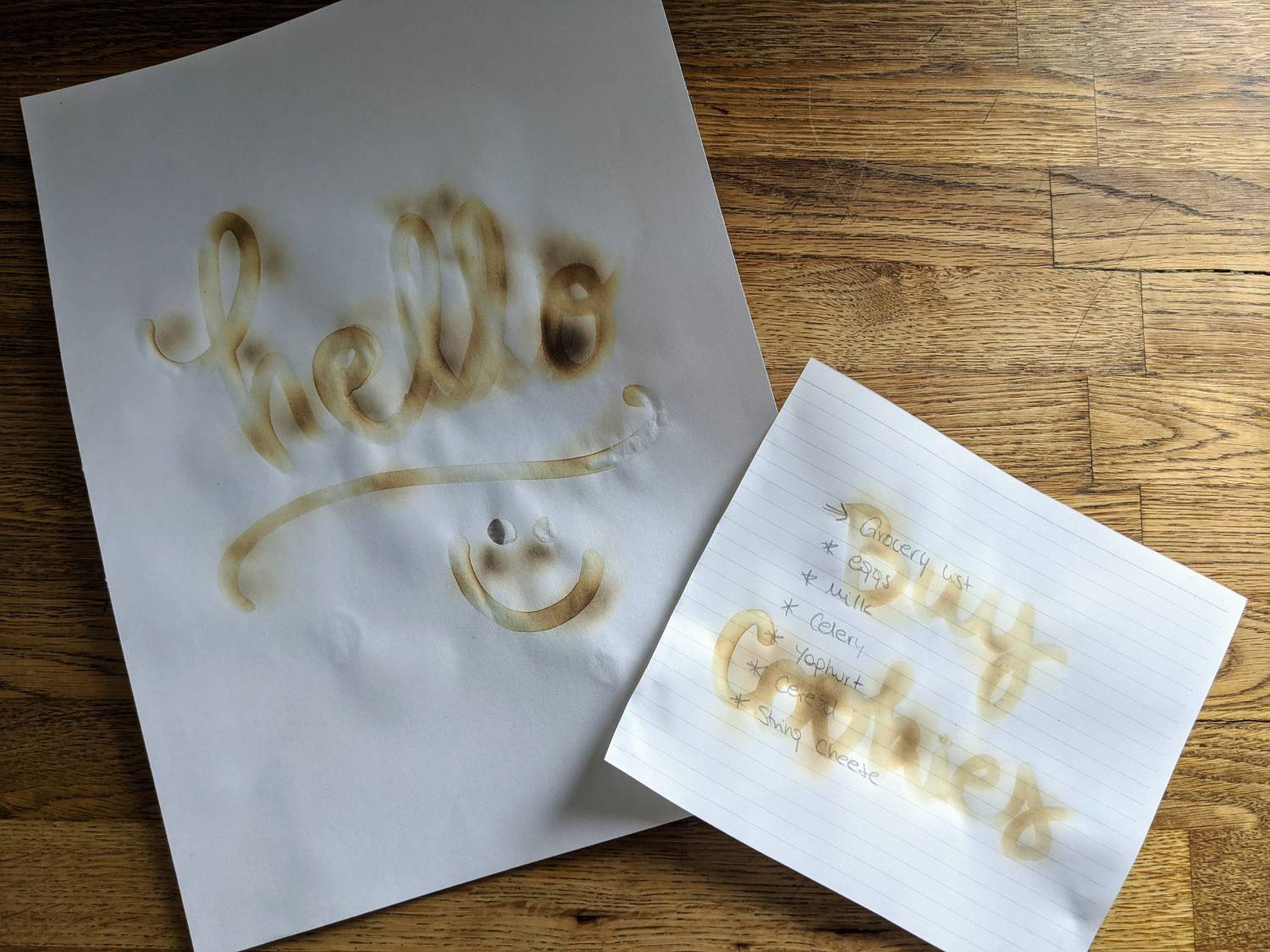

Welcome to PopSci’s at-home science projects series. On weekdays at noon, we’ll be posting new projects that use ingredients you can buy at the grocery store. Show us how it went by tagging your project on social media using #popsciprojects.
Movie spies are super cool. They always seem to possess some amazing, technological gadget that ultimately helps them dismantle an atomic bomb, save the queen, or stop the assassination of the Malaysian prime minister.
But espionage techniques don’t have to depend on such intricate devices. Real-life spies have employed more analog methods—writing invisible messages with acidic liquids such as lemon juice is one of them. You can use milk, too, but the science behind it is not the same.
Teach your kids this simple trick and you can even reclaim a little privacy around the house by leaving secret notes for each other.
But before you start, an important warning: This project involves a heat source. To avoid any injuries, make sure you or another adult are in charge of either handling or supervising the use of heat. We also recommend having a fire extinguisher close at hand just in case.
Stats
- Time: 5-10 minutes
- Difficulty: easy
What you’ll need
- The juice of half a lemon
- A small container
- ½ a teaspoon of water
- Cotton swabs
- Paper
- A heat source
Instructions

1. Squeeze the lemon juice into the small container. You can use your hands or, if you have any unhealed scratches, a juicier. If you get some seeds, don’t worry about them.
2. Add the water. Stir.
3. Write your message. Submerge the tip of a cotton swab in the lemon-water solution, and use it to write your secret message on some paper.
4. Let the “ink” dry.
5. Optional) Write a decoy message. If you want to mislead anybody who might suspect there’s a secret message on the paper, write something else on the page with a regular pencil. I wrote an ordinary grocery list.

6. Use a heat source to decode the secret message. To read the message, expose the paper to heat from the back. Move it constantly so it doesn’t catch fire.
You can use a candle, a lighter, or a lamp with a 100-watt incandescent light bulb. An energy-saving light bulb won’t heat up as much as an old, classic bulb will, so you’d be stuck holding the paper over a lamp for hours without anything showing up. If you’re using a candle, choose one that comes in a container—that will put some distance between the paper and the flame.

How it works
You may have done this project before, and you may even believe you know how it works. It’s not as simple as you think. “There is a lot of misinformation on the web about this experiment,” says Karen M. Schaich, a professor at Rutgers University’s food science department.
If you google this project, you’ll find a lot of sites saying the reason the lemon juice turns brown is oxidation, the chemical reaction triggered when a compound releases carbon into the air. This happens when heat breaks the bonds holding carbon substances—such as lemon juice— together.
This is definitely a thing that happens, but not in this case, Schaich says. Lemon juice contains ascorbic acid, which browns when you leave it in the open air. In this particular experiment, the applied heat is not enough to break any molecular bonds and oxidize the lemon juice—it simply accelerates the degradation of the ascorbic acid.
“For oxidation to happen, the oxygen has to go inside the molecule or link into something. And for that, you need something to come out” says Andrea Liceaga, a professor of food science at the College of Agriculture at Purdue University. “You’d need a temperature that would burn the paper, but in this experiment you’re definitely not doing that.”
Milk, of course, does not have ascorbic acid, so the reason it turns brown is different. “In that case, it is sugars reacting with proteins in the milk, a process that is also catalyzed by heat,” Schaich explains. “It’s the same reason why butter browns and burns when you fry with it.”
